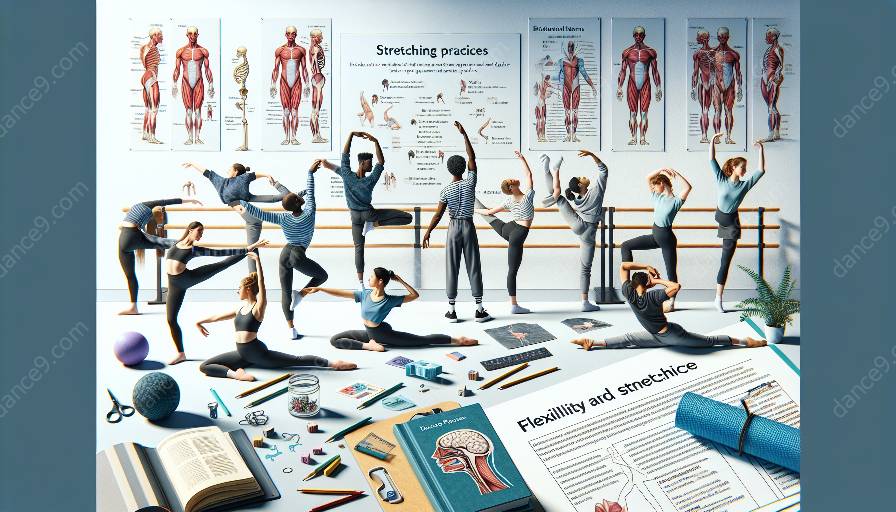Dancers require a delicate balance between flexibility and strength to excel in their art. This delicate balance is vital to not only achieve peak performance but also maintain overall physical and mental health. This article will explore the importance of balancing flexibility and strength training for dancers and its impact on their physical and mental well-being.
The Significance of Flexibility and Strength in Dance
Flexibility and strength are two essential components of a dancer's training regimen. Flexibility allows dancers to achieve a wide range of motion, execute intricate movements, and prevent injuries. On the other hand, strength is necessary to support and control these movements, maintain stability, and enhance overall performance.
Compatibility with Flexibility and Stretching for Dancers
When it comes to flexibility and stretching, dancers need to focus on both active and passive forms of stretching. Active stretching helps improve flexibility while also maintaining muscle engagement, and passive stretching aids in increasing overall range of motion. By incorporating a combination of these stretching techniques, dancers can achieve the optimal balance between flexibility and strength.
The Importance of Balancing Flexibility and Strength Training
It is crucial for dancers to strike a balance between flexibility and strength training to avoid potential imbalances that could lead to injuries. To achieve this balance, dancers must implement targeted exercises that promote both flexibility and strength simultaneously. This can be accomplished through a diverse range of training modalities, including Pilates, resistance training, and specific dance techniques that emphasize both aspects.
Physical and Mental Health in Dance
Physical and mental health are closely interconnected in the world of dance. Balancing flexibility and strength training not only enhances physical performance but also plays a significant role in promoting mental well-being. Engaging in a comprehensive training program that addresses both flexibility and strength can lead to increased body awareness, reduced stress, and improved mental focus, ultimately contributing to a healthier overall state of mind.
Tips for Balancing Flexibility and Strength Training
1. Combined Training: Integrate flexibility and strength exercises into your regular training routine to achieve a balanced approach.
2. Targeted Stretches: Focus on specific stretches that cater to the muscles used in your dance repertoire while incorporating strength-building movements.
3. Rest and Recovery: Allow adequate rest and recovery periods between intense training sessions to prevent overuse injuries.
4. Mental Conditioning: Practice mental exercises such as visualization, mindfulness, and relaxation techniques to complement your physical training efforts.
Conclusion
Excelling in dance requires dancers to strike a harmonious balance between flexibility and strength training. By understanding the significance of this balance and implementing targeted strategies, dancers can optimize their physical and mental well-being, ultimately enhancing their overall performance and enjoyment of dance.


































